#batllo house
Text

CASA BATLLÓ
#casa batllo#batllo house#casa batlló#antoni gaudi#barcelona#cataluña#catalonia#españa#spain#europe#europa
277 notes
·
View notes
Text

Casa Batlló, Barcelona, Spain
@Ken4photo
#art#design#architecture#photography#nightscape#barcelona#spain#casa#antoni gaudi#gaudi#ken4photo#casa batllo#town house#luxuryhouse#luxuryhome
1K notes
·
View notes
Text

#House of the Bones#Casa Batlló (Batllo House) is a building in Barcelona designed by Antoni Gaudí#and considered one of his masterpieces. Known as the#it is a remodel of a previously built house#it was redesigned in 1904 by Gaudí... [1080x490]
1 note
·
View note
Text
Blog #15/Jan 19. Madrid & Barcelona are famously rival cities with different cultures and a complicated interwoven history. Browse this scholarly article (Rodriguez-Pose & Hardy 2020) and combine with your own observations to compare/contrast the two cities. - Shared a document: https://group.me/c6T5Lt8HMFN3u
The paper linked above details how Madrid has surpassed Barcelona in economic superiority, and lays out theories for why that has happened. Authors Rodriguez-Pose and Hardy believe that the ties of the well-established Barcelonian society became too strong, and fractured the city as it grew with the new democratic government. Madrid created its identity as it was growing, and thus those ties became dynamic and flexible. While I think this can be hard to see from the short time we spent in each city, I kind of get the picture. In Barcelona, we saw a number of sites which were beautiful and historical, but had not really become actors in the native scene of Barcelona. Casa Mila and Casa Batllo are probably the least notable here- they are venues for various functions, and the former is also housing. Strictly speaking, that still does not really make them a widely used cultural space for everyone. Similar to this is Parc Guell, which is overwhelmed with tourists. Last but not least is La Sagrada Familia, a privately funded Catholic church. It is conditionally open to the public, and has been the object of much criticism for being a financial drain and a threat to surrounding housing. Thus, much of the sites we saw in Barcelona don't integrate themselves with the everyday Barcelonian, they serve tourists and specific functions. This is going to strain the public's relationship with major points of Catalonian identity. Even Gaudi's style can be attributed to this, as it was particularly Catalonian. His housing projects were expensive to live in, and his cathedral nearly burned for eating up too much money. These cultural landmarks are associated with the rich, which is going to further divide Catalonians.
This can be contrasted with two of my favorite sites in Madrid, Rio Park and the Matadero Complex. Both of these locations are created by the city, for the people. They are widely available to the public, and either host cultural events, or provide a place for people to gather and do things together (which we might say is how culture is "made"). They look back at history by restoring what is already there, while moving forward and pushing the citizens of Madrid to create art and have fun together. While we did not discuss much about the economic states of either of these cities, I think the structures we saw make it kind of evident why Madrid has surpassed Barcelona. The latter is already crystallized in centuries of culture, which is available to some but not others. The former is dynamic, looking for ways to take their landmarks and make them a center for people who actually live there, and not just tourists and those with money to spend.
0 notes
Text
All You Need to Know BEFORE You Visit Casa Batllo (Barcelona)
Casa Batlló is one of the most iconic and unique landmarks in Barcelona, designed by the renowned Catalan architect Antoni Gaudí. Before you visit Casa Batlló, here's what you need to know to make the most of your experience:
Location: Casa Batlló is located at Passeig de Gràcia, 43, in the heart of Barcelona. It's easily accessible by public transportation, including the metro and buses.
History: The building was designed by Antoni Gaudí and built between 1904 and 1906. It is a prime example of Modernisme, a Catalan version of Art Nouveau, and is famous for its organic forms, colorful mosaics, and imaginative design.
Tickets: You can purchase tickets online in advance to avoid long lines at the entrance. There are different ticket options, including self-guided tours and guided tours with an audio guide available in multiple languages.
Operating Hours: Casa Batlló is generally open every day of the year, with extended hours during the summer months. Be sure to check the official website for the most up-to-date information on opening hours.
Guided Tours: While a self-guided tour is an option, consider taking a guided tour to gain deeper insights into the history, architecture, and symbolism of Casa Batlló. The audio guides are informative and available in several languages.
Photography: Photography is allowed inside the building, so bring your camera or smartphone to capture the unique architecture and design elements. However, be respectful of other visitors and the property.
Accessibility: Casa Batlló is partially accessible for people with reduced mobility, but there are some limitations due to the historic nature of the building. Check the official website for specific accessibility information.
Best Time to Visit: To avoid crowds, visit early in the morning or late in the afternoon. Casa Batlló can get quite busy during peak tourist hours.
Combination Tickets: Consider purchasing combination tickets that include entry to other Gaudí landmarks in Barcelona, such as La Pedrera (Casa Milà) or Park Güell, to save money.
Children and Families: Casa Batlló is a family-friendly attraction. They often have special activities and workshops for children, so check their website for family-oriented events.
Souvenirs: There is a gift shop on the premises where you can purchase Gaudí-inspired souvenirs, books, and unique gifts.
Respect the Property: Remember that Casa Batlló is a historic building, so please respect the rules and do not touch or lean on the architectural elements.
Audio Guide: If you opt for the audio guide, take your time to listen to the detailed explanations about the history and symbolism of the different areas of the house.
Weather: If you plan to visit the rooftop, be prepared for varying weather conditions. Barcelona can be quite hot in the summer, so sunscreen and a hat are advisable.
Plan Ahead: To make the most of your visit, read up on the history of Casa Batlló and Gaudí's architecture beforehand, so you can fully appreciate the details during your tour.
Casa Batlló is a must-visit destination for architecture and art enthusiasts, and it offers a fascinating glimpse into the creative mind of Antoni Gaudí. Enjoy your visit!
0 notes
Text
Week 6: Hola Barcelona!
Hi everyone! This week I started my work experience with the Punta Campanella Marine Conservatory. Our first day consisted of an orientation and brief explanation of the park and what their projects are currently. Our job supervisor, Domenico, is understanding and so enthusiastic about our experience this summer.
To get to work, we must take a bus ride to a town nearby called Massa Lubrense. The buses can be chaotic at times, but you get better at it as you go along. The bus ride is around 20-30 minutes which is nice compared to other friends who have to travel 1-2 hrs to reach their work experience in Naples.
My actual first day on the job was on Thursday. I took the bus to a marina with two other interns to meet Domenico at the docks. Our job was to record information on what fishermen in the area were catching and document their price, weight, species, etc. It was nice to meet some of the locals in the area and learn more about the coastal environment around Sorrento. After this, we had a quick coffee break (it is common in Italian culture to have a coffee with your colleagues) and went to the office. In the office, we put all the information we collected in an excel sheet along with the pictures we took. We then went down to their visitor center and helped clean out some aquariums. I am very excited for how this experience will go and next week I will be visiting the Ieranto Bay to do some research!
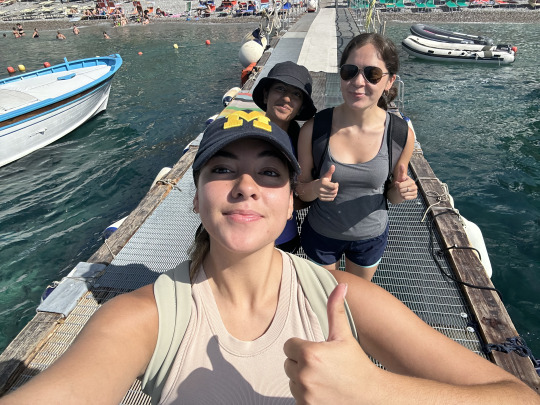

This weekend my friends and I took a trip to Barcelona. As this is my only trip outside of Italy, I was pretty excited. I also have some family members in Barcelona so I was pretty happy to be able to meet them after not seeing them for a couple years. We booked our tickets through Student Universe( recommended if you are looking for cheap flights) and everything went smoothly. To get to the Naples airport, we took a 10 euro shuttle from Sorrento which took around 2 hours. The first night we arrived in Barcelona at around 12 am so we did not do much till the next day.
Our first stop the next morning was to Park Guell. We grabbed some lunch and then used the metro to get to the park. The Barcelona metro is pretty simple to use and I would recommend getting the pass for 10 rides for 11 euros if you are staying for multiple days. The tickets for the park were 10 euros and I would advise to buy them in advance as they tend to sell out the day of. After this we got lunch and headed to our tour of the Sagrada Familia around 6pm.



Going inside the Sagrada Familia was something I will never forget. It is so beautiful and going around the time the sun sets made the stained glass windows look absolutely magical. Most of us were left speechless and I could spend hours just looking around. It was interesting to learn about all the details the architect Antoni Gaudí had envisioned for the church and how they are still continuing its construction till this day. After this, we went back to the airbnb, had dinner, and then headed out for the night!


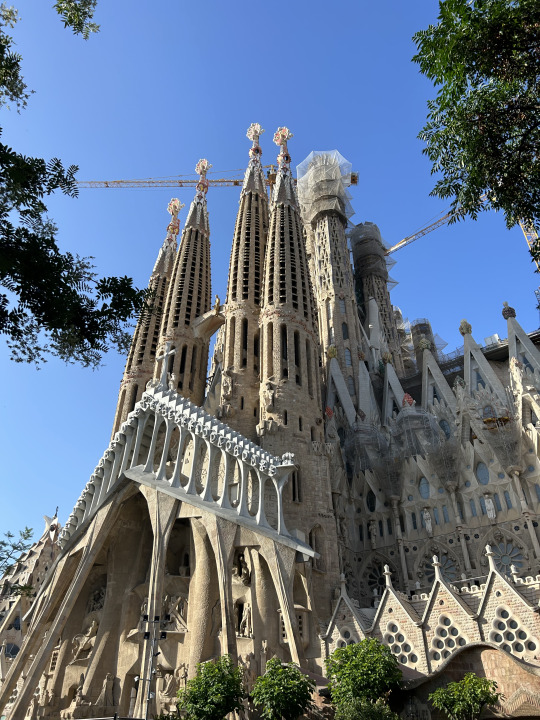
The next morning, I got to show my friends a great Venezuelan food place near where we were staying. I noticed that there were many Venezuelan restaurants in Barcelona, but this place had my favorite traditional dish, cachapas! We then caught the metro to a main street called Passeig de Gracia to see the houses of Gaudi, Casa Mila and Casa Batllo. Barcelona is filled with Gaudi’s creations and you can notice his influence in every aspect of architecture in Barcelona (even the lampposts!).



For dinner, we had traditional food from Spain, paella and tapas. The seafood paella was so good and my favorite dish was the garlic shrimp! We also had sangria de cava which is a traditional wine from the area. That night we decided to go to the Dow Jones bar. This bar was so cool as it mimicked the stock market so prices for drinks would go up and down similar to stocks. There would also be a market crash every half hour where the drinks would go back to their baseline price.

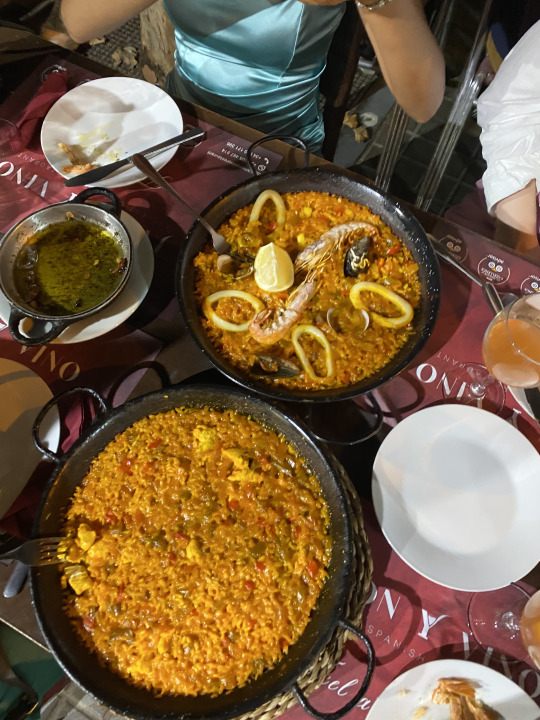

For our final day in Barcelona, we went to Parque de La Citadella in the morning. The park is located right near the Arc de Triomf and after I took the metro to have lunch with family who live nearby. After lunch, I met up with my friends at Las Ramblas and visited the Mercat de La Boqueria. This street market had the best fruit and juices I have ever had. They also had many sandwich places and different types of food. From here, we picked up our luggages and headed on our way back to Naples.


Barcelona was such a fun city to discover and there are so many things to do. It was definitely an enjoyable weekend and I can’t believe I am almost done with my study abroad. Until next time!
Josefia Frydenborg
Environmental Engineering
Engineering in Sorrento
1 note
·
View note
Text
I was inspired to write this article by a discussion about the sense of visiting Casa Batllo, one of Antoni Gaudí's houses!
As you know, Gaudi left a few buildings in Barcelona that attract many tourists to the city. This seems understandable because these buildings, despite almost 100 years that have passed since the death of the architect, still arouse quite a surprise in the viewers. It's hard to imagine what emotions evoked 100 years ago.
Anyway, all the buildings that Gaudi left behind are slightly different from each other and not all of them are worth visiting - below I will present you a list of places worth visiting in order from the most important to the one that I personally would skip!
Sagrada familia! - definitely a monument worth visiting - it evokes extreme emotions from great delight to total disappointment. The disadvantage is that only part of the church was built by Gudi himself and the rest is continued by his successors, except that ... according to designs and thoughts of the first architect. monument for me no. 1 and definitely worth a visit.
park Guell - personally I don't like this park (I think Ciutadella park is better than it), but as Gaudi's work it is worth visiting and checking what architectural sense Gaudi had. there is also a GIGANTIC number of symbols and signs that would be worth knowing when visiting this place, in my opinion you should go here either with a guide or at least with a paper/electronic version of it.
Casa Mila - a house that is completely different from all of Gaudí's other works. the company that manages it understands that it is a good business hence and the tickets are not the cheapest, but they are compensated by the interiors that are really well preserved, the view from the terrace is pleasant but let's face it, these houses are not visited for the views
Palau Guell - the only house that is in the hands of the city, I was wondering for a long time whether it should be in place 3 or 4 and I still don't know ;) but it's a house worth visiting because of the interiors (although they are not as well preserved as in Casa Mila) and the splendor used by Gaudi in this place
Casa Vicens - Gaudí's first house, a bit off the beaten path (although the word will take on a slightly different meaning later in this list ;) ) the interiors, although without furniture, are really worth seeing (especially the blue alcoves in the Arabic style) unfortunately the house has no furniture or it also has a large garden that surrounded the house in the 1920s.
Casa Batllo - house symbol of Barcelona, the most photographed building in the Eixample district and that's it, inside it's not for nothing and the tickets are among the most expensive. you can admire the staircase, but for 30 € / person it is a bit much
Casa Bellesguard - a house located at the foot of the Tibidabo hill, quite far from the center and in which a similar "much" has been preserved as in Casa Batllo. looking at walls with nothing on them is not one of my favorite activities. although it must be admitted that the house has a large and well-preserved garden, quite cheap entrance tickets and you can take interesting photos there. Ultimately, this is a place for connoisseurs only.
Crypt Guell - it is so low for only one reason - it is located about 20 km from the center of Barcelona and you have to get there by train. If not for this fact, it would deserve at least the 4th or 5th place - a church (actually just a crypt) where Gudi's sense is clearly visible. cool and interesting place. The only downside (apart from the distance) is to check the hours when it is possible to visit it.
Pabelonnes Guell - or the Guell pavilions, I visited them once inside and I must say that it was a tragedy. are completely unused. Probably because they are owned and part of the agricultural university and they simply fulfill their role, i.e. they are a storehouse for various instruments. far from the center, they do
not really deserve to go to see them (unless someone is going to park de Pedralbess or following the trail of Dan Brown's book)
Casa Calvet - a private building that cannot be visited, you can approach its facade, although this one also seems very bland compared to other monuments. I usually pass it without stopping.
All other works by Gaudí are either small (like the pergola in the gardens of Pedralbes) or just an element of decoration (like the lanterns on Reial square) or are not possible to visit (like the Collegio Teresianum) or are just far away from Barcelona (Guell Cellar, Gardens of Artigas or Mallorca Cathedral) so it makes no sense to include them on this list
the list is of course subjective, but it is supported by years of work as a city guide, own sympathies for modernist architecture, simple knowledge of the subject as well as multiple visits to all these places.
[block_content id="17831"]
0 notes
Photo

The subtitle of this book was The Most Incredible Buildings You've probably never heard of, and I was pleasantly surprised to see that was true. Many of the books I had not heard of, and I enjoyed learning things about the buildings I had. Most of the book was about individual buildings, but in some cases it was a category such as Worlds Fairs or Airports
Of the ones I had never heard of, some of my favorites were:
Tatlin's Tower - This was never actually built, but it was conceived. A tall tower that would have shapes inside it that would revolve in the rhythms of the sun, moon and Earth.
Chief Waka's House - He was a member of an Indigenous Nation in Canada and his house, and the Totem pole outside it, reflected his family, heritage and history.
Of the ones I had heard of:
Casa Batllo - The house that Gaudi designed. He was a devout Catholic, but the house has dragon elements in it because of the story of St. George
The Doge's Palace - Learning about it's design techniques was interesting.
If you love architecture, travel or history check this book out.
0 notes
Text
The land of bulls is also famous for its passionate flamenco dance and is also famous for its beautiful scenes that are truly captivating. Spain is full of sunshine, wind, and fairyland always waiting for the footsteps of tourists everywhere. When preparing your Spain travel plan, do not forget to include the following 10 places in the list of destinations not to be missed!
1. Madrid
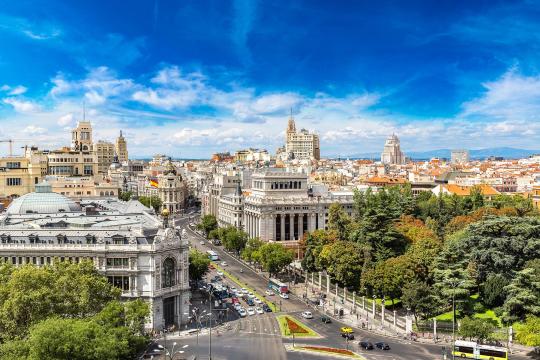
This is a very vibrant place, for there are magnificent palaces, modern neighborhoods, and extraordinary architectural lines. The glamor mixed with the ancient, the quiet mixed with the bustle, mixed with the music and romantic flamenco, you will never forget.
Don’t forget to visit Boulevards, museums, squares, and palaces all over the city! You won’t be able to stop admiring them when you see them. The experience of watching the sunset in an attic cafe is also really worth your while.
2. Barcelona is one of the most beautiful places in Spain

Barcelona, located in the north of Spain, is one of the country’s most popular tourist attractions. You can feel all the beauty of Europe when you come here. From architecture, from modernity, from services, from culture to people, all exude a bold European look.
The night in Barcelona is very vibrant and sparkling, festivals and music nights are regularly held to attract visitors. In addition to the nightlife experience, you can take a walk around La Rambla to see the romantic greenery or sunbathe at Barceloneta beach. Also, visit the Batllo Casa and the famous Sagrada Familia throughout Europe.
3. Cordoba
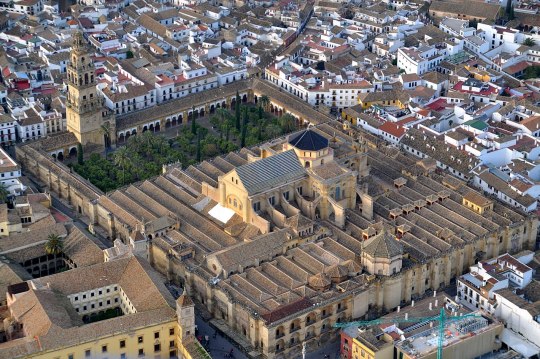
Cordoba, located in the south of the country, is a city of many cultures, with a rich history of trade spanning hundreds of years. The architectural style of this city is boldly ancient, the houses are all under a layer of yellow-brown paint, creating a charming beauty.
The most prominent place in Cordoba is the Mezquita Mosque, which has a dome typical of the Spanish Islamic renaissance. The church is considered a wonder of the world for its unique blend of antiquity and religious culture. Other parts of the city are also smartly planned to create beautiful features that every step visitors can take an impressive picture.
4. Valencia

The city of Valencia, facing the Gulf of Valencia, is sometimes thought to represent the whole of Spain. The architecture of the houses here is a combination of futuristic modernity and artistic flair.
Come here, and go to the theaters, science museums, and aquariums that are extremely modern. The more you will recognize Valencia as a city of science and art. In August, there will be a very unique tomato-throwing festival and one of the largest food festivals in the world. Remember to bring lots of clothes if you travel at this time because the weather is still quite dry and hot.
5. Seville

Seville is located in southern Spain, bringing together all the most unique and precious features of Andalusian culture. The works here are all in Roman style, with a little bit of beauty of Islamic architecture, and even Gothic art.
Madrid is very famous for its flamenco dance, but Seville is where it really originated. Besides, this is also home to famous bullfights and attracts the most spectators in this country.
The tomb of the great explorer – who discovered America – Christopher Columbus is located here. Giralda bell tower – an extremely complex architectural work of medieval architecture is also here. Therefore, it is not overstated when someone considers that Seville is the most vibrant and attractive city in Spain.
0 notes
Photo



interiors / exteriors from architect Antonio Gaudi - book by David Mower
Top: staircase in the Batllo House
Centre: detail facade of the Batllo House
Bottom: staircase with lift in the Calvet House
17 notes
·
View notes
Text

Casa Batlló - BARCELONA
#casa batlló#batllo house#antoni gaudi#floral#flora#flowers#flores#barcelona#cataluña#catalonia#españa#spain#europe#europa
108 notes
·
View notes
Photo
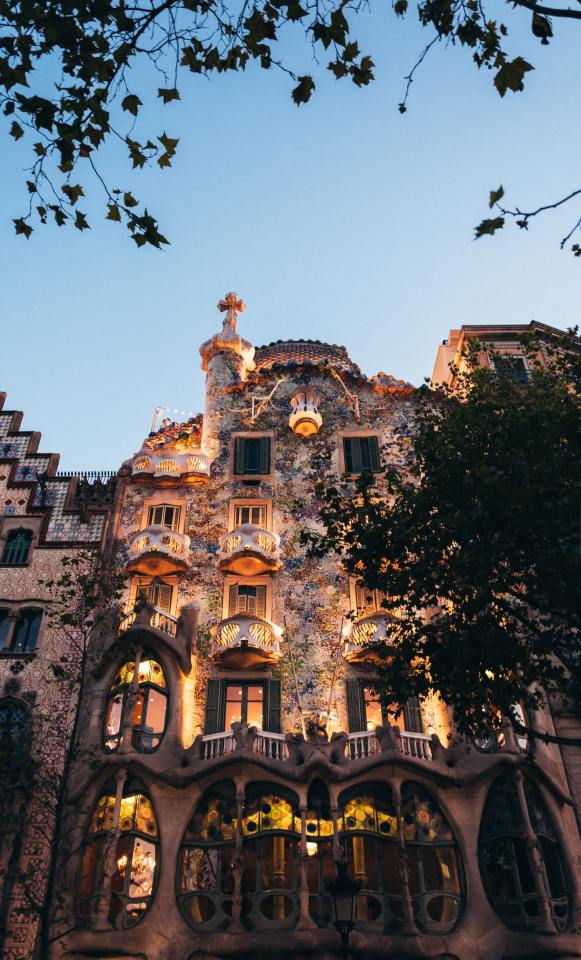
Casa Batllo, Barcelona (by Theodor Vasile)
9K notes
·
View notes
Photo
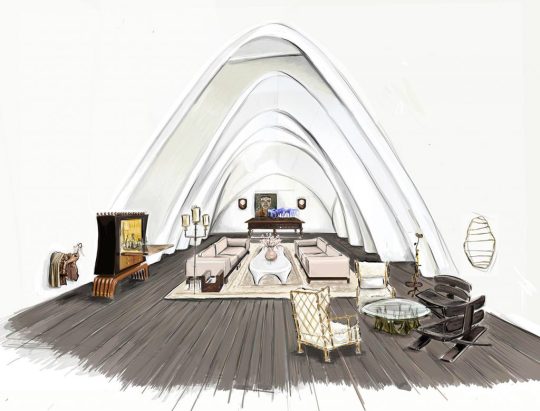
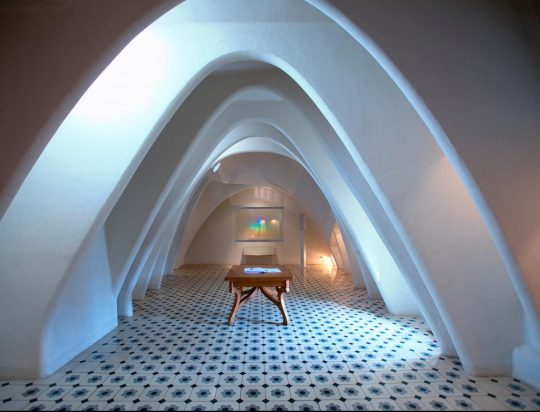
1stDibs Virtual Showhouse !
The Loft, Casa Batlló, Barcelona,
Antoni Gaudí, Built :1877, Redesigned in 1904–06,
Reimagined by Gil Melott of Studio 6F
#art#interior design#design#loft#casa batllo#barcelona#iconic#antoni gaudi#1877#gil melott#reimagined#restauration#luxury lifestyle#luxury house#minimalism#1stdibs#showhouse#virtual
58 notes
·
View notes
Text
Blog #17/Jan 21. Au Revoir & Adios, Mediterranean! What was your favorite structure in the south of France or Spain, and why? What was you favorite city, and why? Finally, look back on your personal goals for the trip. Did you meet them in this phase of trip? Be specific with your evidence & anecdotes.
My favorite structure in Spain was the Matadero Complex. At the time of construction, the complex was intended to be a slaughterhouse. It was built in the Mudejar style, and features a number of large buildings and courtyards. Today, it serves primarily as a cultural center. The complex itself is divided up into several purposes- there is a theater and media laboratory, a library, several spaces for artists in residence and art showings, and one for design and designers. A cantina serves visitors food, and the open plazas can be used by the public for games and sports. There is a greenhouse, featuring a fountain and several different climate rooms. I was particularly excited to see a dance school in one of the naves. The complex has become a wonderful home for culture and the arts, allowing for many different disciplines to converge and mix to create something new. I am particularly passionate about leading a multi-artistic life- it would be incredibly valuable for me to so close to other artists who could influence my work. I often look for inspiration for ceramics in metalwork and plants, and I love to draw things from movies and TV shows that I watch. This whole space was the ideal melting pot for so many kinds of art and that I am both interested in and take inspiration from, and I am happy to have experienced it.
My favorite city was Barcelona, for several reasons. First, it was a lot warmer! The weather change was nice, especially after being so sick and cold in Montpellier. I am also a little biased, since my structure was located there. La Sagrada Familia was very beautiful to see in person, especially after researching and writing about it. Gaudi's work in general was wonderful, especially since I really enjoy the Art Nouveau style (I have several prints in my room here at Elon from that era). Casa Mila, Casa Batllo, and Park Guell were exeptional, and I remember thinking that these houses were the type I dreamed of living in when I was a child.
As for my goals, I believe I did meet the one on modern architecture in Barcelona. I was particularly struck by the thoughtful simplicity of the Barcelona Pavilion. At first, I did think it looked like a marble pancake. It is not easy to understand from the outside. Once I got inside, I realized that it was a really good example of modern architecture. The marble and glass planes intersected with each other in a way that was particularly reminiscent of linear algebra (one of my favorite types of math), and I really enjoyed the sculpture and pool within the structure. All the flat planes extending out around me contrasted well with the woman standing in the water. Her natural shapes were emphasized by all the unnatural flatness around her. Enclosing the pool were large slabs of green marble, which had been set such that the pattern in each stone was mirrored by the one above it. It was a beautiful, unnerving effect- reminding me of a Rorschach pattern or the mirror image created in a pond surrounded by a forest. With the water and the sunlight coming from above, it gave the suggestion that se was standing from a pool of water, surrounded by trees. Outside was the larger pool. I struggled with this a little, until I found myself staring at the roof. When the sun is at the right angle, the light bounces off the water and creates a moving, shifting shadow on the white plaster. The shape of the shadow is square-cut, so it meshes with the shape its cast onto, but the texture of the shadow reflected the patterns in the marble. It was a really odd, fulfilling moment for me. I would like to think it was an intentional detail, and if it was, its so small and transient that it speaks to the thought and effort of this structure. I don't often like modern architecture, but here I think I saw the genius of Mies van der Rohe.
0 notes
Text

Casa Batllo by Antoni Gaudi
Barcelona, Spain
July 2018
#europe#35 mm#analog#disposable#disposable camera#spain#art#travel#wanderlust#traveler#casa batllo#antoni gaudi#barcelona#modernism#architecture#house#deco#original photograph#original photography#photographers of tumblr
4 notes
·
View notes
Note
I know p much nothing about architecture but I love a good rant let's hear some Spicy Opinions™️
Spicy Architecture Opinions:
99% of the really cool buildings people love are like. The worst. There's a lot of buildings I think are very cool, but would be much cooler as sculptures and should not be. Buildings people live in. The more people who go "wow that's so cool" the more likely it is that architects hate it. Frank Lloyd Wright, I love his buildings aesthetically, they have the structural integrity of banana pudding. Frank Gehry's buildings leak like a sieve.
There's basically like. A direct correlation between "how much layppl like a thing" and "how much architects don't" LMAO
I think lots of architects, as seems to be a pattern in technical professions like engineering, focus too much on concept and aesthetic and weirdly try to fit everything around that. Also they don't take into account like. Electricians, plumbers, etc bc they're Below Them or whatever.
Also fuck concrete all my besties hate poured concrete. There's a building (the Sheats Goldstein House) that's in a lot of movies n stuff (like The Big Lebowski) and every time I see it I go wow! It's that house! Hate it!

Like why is that part of the bench on the OTHER SIDE of the glass. Also the benches are all concrete so you can't move them or anything. They're essentially part of the house.
IDK what else I have more Thoughts but can't organize them LMAO enjoy these thoughts
Anyway my fave architect is Antoni Gaudi he's like if Frank Lloyd Wright was a good architect and Spanish.


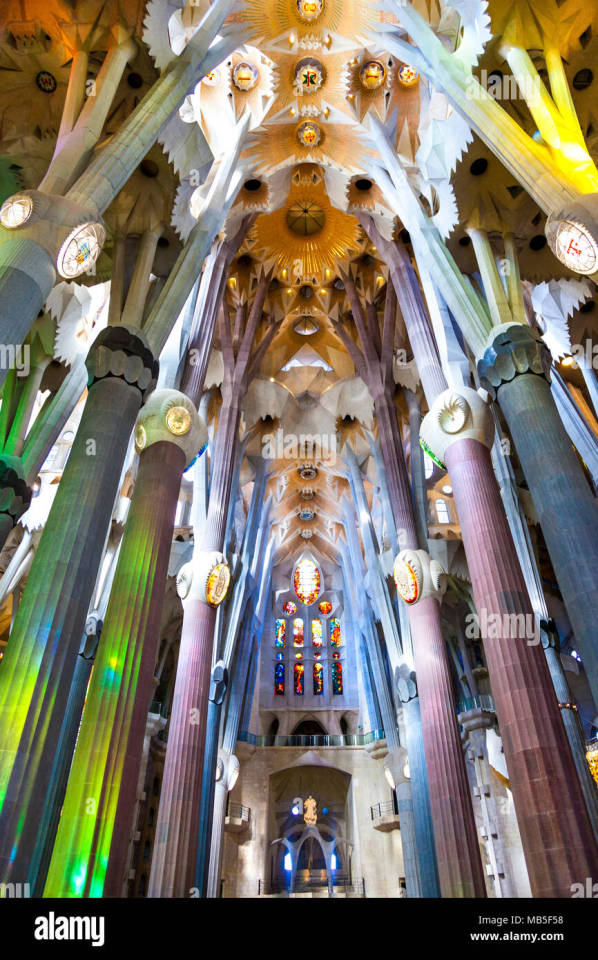
Pictured: Casa Batllo (top) and the Sagrada Familia (bottom)
Sagrada Familia is my absolute favorite building 💕 I got to see it in person once! It was really breathtaking. The facades have incredible detail and they have a whole museum inside about Gaudi and his architectural process. He designed some of his buildings by hanging strings and attaching weights, essentially making sure his structures were strong enough to hold weight by designing the shape upside down! He was an AMAZING mathematician.

11 notes
·
View notes